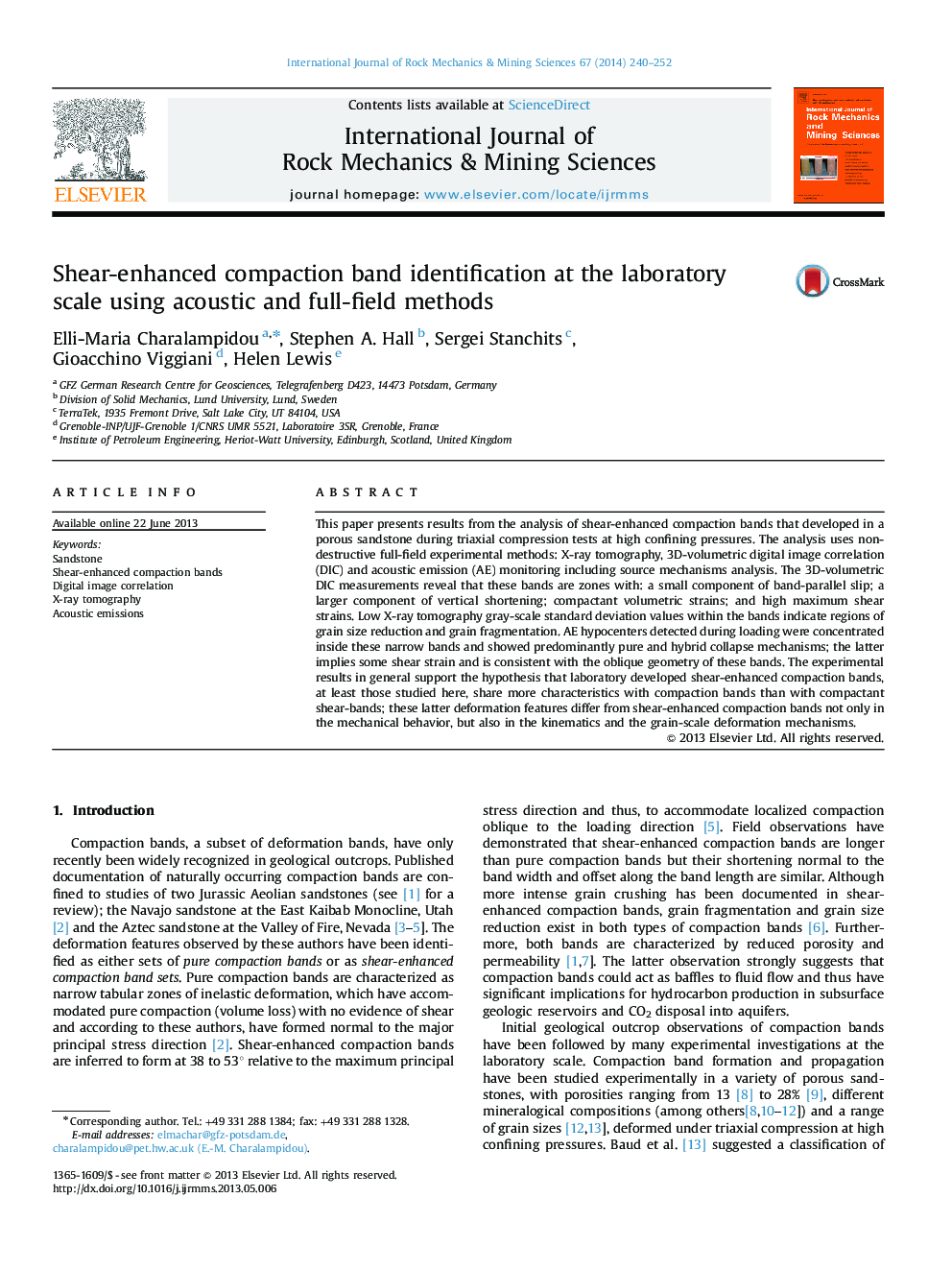| Article ID | Journal | Published Year | Pages | File Type |
|---|---|---|---|---|
| 809608 | International Journal of Rock Mechanics and Mining Sciences | 2014 | 13 Pages |
•Shear-enhanced compaction band identification in the laboratory scale.•Combination of non-destructive full-field and acoustic methods.•Measurement of band-parallel slip and vertical shortening components.•Qualification of maximum shear and volumetric strains.•Pure and hybrid collapse mechanisms.
This paper presents results from the analysis of shear-enhanced compaction bands that developed in a porous sandstone during triaxial compression tests at high confining pressures. The analysis uses non-destructive full-field experimental methods: X-ray tomography, 3D-volumetric digital image correlation (DIC) and acoustic emission (AE) monitoring including source mechanisms analysis. The 3D-volumetric DIC measurements reveal that these bands are zones with: a small component of band-parallel slip; a larger component of vertical shortening; compactant volumetric strains; and high maximum shear strains. Low X-ray tomography gray-scale standard deviation values within the bands indicate regions of grain size reduction and grain fragmentation. AE hypocenters detected during loading were concentrated inside these narrow bands and showed predominantly pure and hybrid collapse mechanisms; the latter implies some shear strain and is consistent with the oblique geometry of these bands. The experimental results in general support the hypothesis that laboratory developed shear-enhanced compaction bands, at least those studied here, share more characteristics with compaction bands than with compactant shear-bands; these latter deformation features differ from shear-enhanced compaction bands not only in the mechanical behavior, but also in the kinematics and the grain-scale deformation mechanisms.
